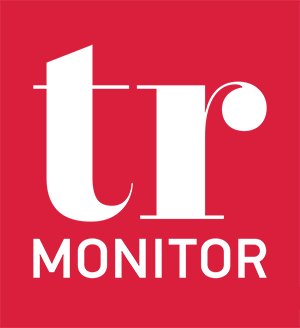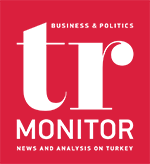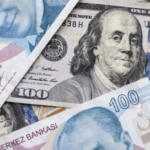As we have mentioned before, we have failed to achieve even half of the targets set for 2023 before the 2011 elections. We were supposed to reduce inflation from 11% to single digits, but we have increased it to 68% with the disputed figures of TurkStat. We were supposed to increase the national income from USD 772 billion to USD 2 trillion, but we have only managed to reach USD 1 trillion despite the pumped consumption and suppressed exchange rate in recent years.
We were supposed to increase our share in world trade from 0.8% to 1.5%, but we reduced it to 0.4%. Even in terms of the length of highways, which we were most ambitious about, we were supposed to increase our network from 2119 km to 7500 km, but we could only build 3500 km. It was bound to happen, because thanks to the IMF, we learned how to develop an adjustment and stability program to some extent, but we could not develop a growth program and strategy. Because for 85 years we have not wanted to make structural reforms. Although we have attempted once in a while, we have given up halfway through. What we have done is to make cyclical, opportunistic and easy choices between the structural constraints of the economy (lack of domestic savings, informality, low technology, low employment, sticky inflation) and the priority of growth. That is why we have not been able to achieve the growth rate we achieved in the first 15 years of the Republic. What we will see in the coming year seems to be limited to another flawed growth effort in search of hot money in a conjuncture where inflation and stagnation coexist.
Stagflation likely in 2024
It is clear that the inflation trend, which has been driven up by the exchange rate, which was allowed to jump after the May elections, followed by tax hikes and wage hikes, will rise further from now on, with the new minimum wage hike, pension increases on the way and local election spending, let alone changing direction. Inflation, which is projected to reach 68% by the end of the year, will hover above 70% in the first half of the year, especially with the rigidity in services inflation and high price increases in the food and health sectors. It remains to be seen how inflation will fall from 68% to 33% by the end of 2024 according to the MTP, even though the authorities have declared that this is not a short-term priority. Inflation levels of 15% in 2025 and 8.5% in 2026 also seem very ambitious, even with growth targets of 4% and 5%. If you ask me, even reducing structural and sticky inflation to 25% in three years would be a success. On the other hand, it is understood that this picture will be compounded by a sharp contraction in consumption and domestic demand in the second half of the year due to the tightening initiated because the road has already reached its end.
The current account deficit is not decreasing, on the contrary, it is increasing. In the first 10 months, while it was USD 39 billion last year, this year it is USD 41 billion. The foreign trade deficit continues to increase and the ratio of exports to imports continues to decline. As such, the MTP’s target of a current account deficit of USD 3.9 billion in 2014, 40% lower than this year, seems optimistic. Likewise, halving the budget deficit, which is expected to be 6.4% this year, in two years, and eliminating the primary deficit of 3.9% are also in need of explanation. The fact that the President was authorized to borrow up to three times the budget deficit in violation of the law on borrowing, since the additional budget of TRY 1.1 trillion this year would not be enough and no corresponding revenue could be shown, confirms this. It should also be kept in mind that the 2023 national income calculations are based on the dollar exchange rate, which was kept low under great pressure in the first half, and that there are technical flaws such as not including refugees in the population even though they participate in production. Considering the need to finance a short-term external debt of USD 211 billion and a current account deficit of over USD 40 billion in the coming year, it becomes clear that the burden of the Simsek – Erkan duo is heavy and that they will not be abandoned for a while.
The orthodox version of NEP
Despite the spectacular interest rate hikes, we still have negative interest rates, as they are well below inflation. In any case, interest rate hikes are not meant to encourage savings; they are not meant for other purposes, such as unwinding the accumulation of debt or risk on the balance sheets of the real sector and banks. The only goal is hot money: portfolio inflows and access to foreign loans. On the other hand, it is important to note that tightening has been kept somewhat loose, exchange rate control has been maintained through foreign exchange sales, and credit channels have been opened through selective measures, mainly because the government does not want to give up its priority of growth. Indeed, despite a rapid decline in the CDS premium, it took until December for portfolio inflows to begin (1.4 billion dollars). Deposit rates were also raised to unwind the stock of foreign currency-protected accounts, which posed a huge exchange rate risk to the Treasury and the Central Bank; however, the unwinding, which initially reached TRY 75 billion per week, gradually lost momentum and dropped to TRY 13 billion per week in December.
It has always been difficult for us to develop a coherent and comprehensive growth strategy, and it is even more difficult to do so under these challenging conditions. However, if we need to give a name to the course we want to follow, we can say that it will be a course that will aim to increase exports by suppressing real wages as much as possible and cutting domestic demand, while supporting exports by giving the green light to an increase in exchange rates, especially in the second half of the year. We are likely to see an “orthodox version of the old New Economy Program”, so to speak.







